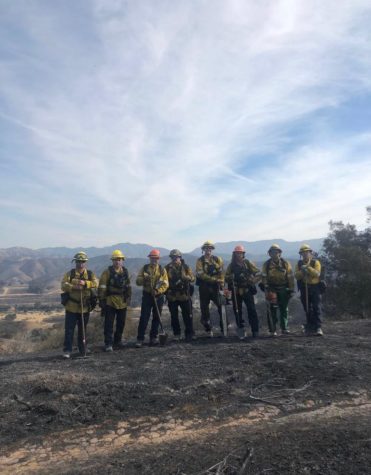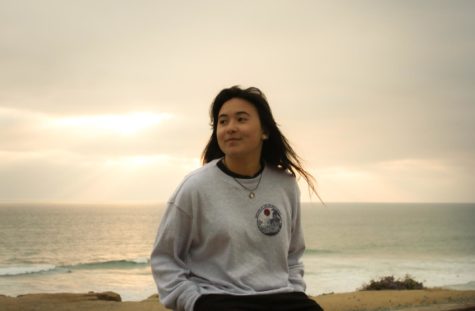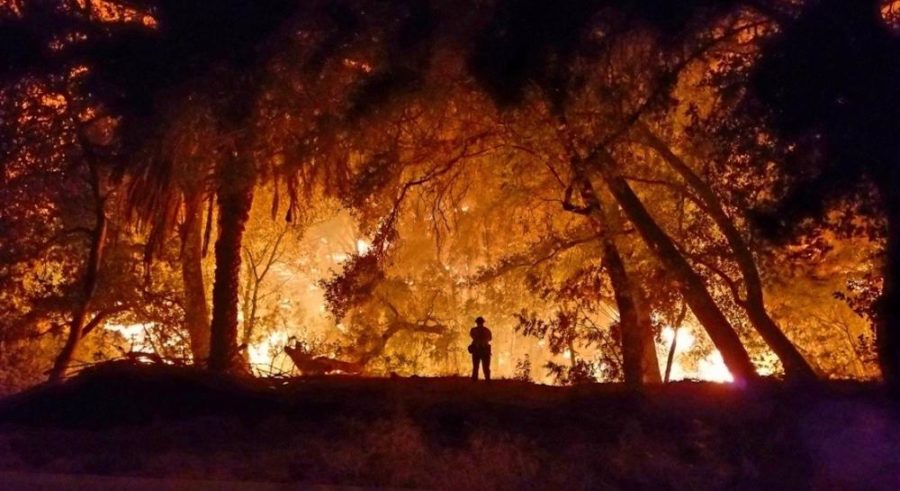We Didn’t Start the Fire…Or Did We?
The fiery skies hover above the city; it is so murky that even the city lights are covered in smoke. As noxious air fills the neighborhoods in Los Angeles, California, fearful families are forced to evacuate their homes. There is nothing people can do to stop this inevitable disaster other than ‘share and repost,’ according to many social media and news sources.
“Our hands are tied,” AP Environmental Science teacher Nathan Chisholm said.
The Getty Fire in Los Angeles, California started on Monday, October 28, 2019 around 1:30 am when a tree branch struck a power line during a windstorm. The fire has burned 745 acres as of November 1, 2019, according to the LA Times.
Wildfires spread rapidly and enlarge due to lack of bush clearance, which is the act of trimming and maintaining the landscaping in one’s yard.
Senior Firefighter Art Doyle at the Los Angeles Fire Department describes the flames as being “two hundred feet tall” and give off the sound of “a jet engine taking off.”
“Flames on the ground can move as fast as 50 miles per hour,” explained Doyle.
What exactly is starting these fires? It is a mix of elements; there is not just one single cause.
Chilsolm said, “There are two types of forest fires: natural forest fires and human influenced forest fires. Many are a hybrid, but human influenced fires tend to be the most common.”
A hybrid fire originates by a mix of natural causes and human implementation. The Getty Fire is a pure example of this because the fire started after a tree branch (nature) hit a powerline (human implementation).
Five firefighters have been injured due to helping with the most recent California fires, but none of the injuries have been life-threatening.
Although the fires have been contained entirely in recent days, they lasted for months, and the likelihood another enormous fire will start in coming years is extremely high.
However, California is clearly not the only place where fires are currently a problem, considering Colorado has had a multitude of fires within the past ten years.
Being surrounded by pine trees, dry grass, and open spaces, wildfires should be on our radar, whether someone comes from Colorado, California, or anywhere else. It can happen in the blink of an eye.
In fact, in 2012, the Waldo Canyon Fire burned 18,247 acres of land and destroyed 346 homes, according to 9News. Once we think things have calmed down, the following summer in 2013, the Black Forest Fire burned 14,280 acres and destroyed 488 homes, according to wildfiretoday.com.
Both disasters ended up claiming two lives each.
Students may feel powerless, as though there is nothing they can do.
You may be asking, “How can I do my part?”
On the contrary, we have more of a say in what direction we head in than anyone else. Let’s speak up and use our voices. It is our future: let’s do something about it.
There are many different ways students can help make a change and help in controlling natural disasters like wildfires.
Earth Science teacher Scott Newell stated, “Knowledge is power…[if] more students are aware, that’s making a difference already.”
Sometimes, it is best to start from square one and become informed about what is happening, even if it isn’t in your state. California fires can connect easily to Colorado. whether you have family in impacted states, or a fire starts similarly near your location.
Students can participate in changing little steps throughout their day-to-day routines, such as changing to energy-efficient light bulbs, turning off the TV when it is not in use, and even incorporating vegetarian meals on occasion.
Turning off electricity and being smart about when you are using it, and cutting down on animal products actually saves energy and carbon fuel.
There are also many programs that anyone can be a part of, such as the Rocky Mountain Field Institute, which is a volunteer program that helps repair trails and areas that were harmed from fires.
There have been a multitude of disasters such as these, both natural and human-caused, and there will continue to be more if nothing is done to stop them. Reposting can only make such a difference.


Bonjour! My name is Ruthie Evilsizer and I am currently a senior at Air Academy High School. This is my first year being a part of the Jetsream Journal...

Heyo, I'm Lana. This is my first year with The Jetstream Journal. I like to play music, go on adventures, hang out with friends, going to concerts, and...













